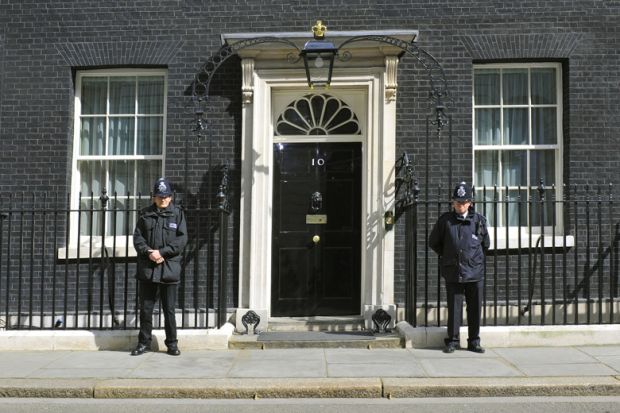In the speech that she made in Downing Street minutes after becoming prime minister, Theresa May identified access to higher education as a key priority, highlighting how white working-class boys were now “less likely than anybody else in Britain to go to university”.
At first glance, then, May’s decision to move responsibility for English universities into the Department for Education and out of what was the Department for Business, Innovation and Skills makes good sense.
There is growing recognition that close collaboration between schools and universities, delivering mentoring and support over a sustained period, is the most effective way to encourage disadvantaged students into higher education.
If bringing schools and universities together in a government department results in a push to improve these partnerships, that could be positive. Recent studies have highlighted the difficulties that universities face in building strong relationships with schools, especially in the face of regular changes in widening participation policy.
It might also be possible to envisage more joined-up policymaking that might assist university admissions officers: think of the concerns around how the separation of AS levels and A levels might disadvantage students from the most challenging schools.
But it’s by no means certain that just putting universities and schools under one roof will lead to closer collaboration.
First, following academisation, the Department for Education has less influence over schools’ activities. Second, and perhaps more importantly, vice-chancellors will now find themselves up against schools in the battle for funding: a contest that they are unlikely to relish.
Across the UK, universities reported a surplus of £1.9 billion last year; a total that may not stand them in good stead when new education secretary Justine Greening is deciding how best to support schools facing major budget problems.
And some of the funding that finds itself most at risk will be the cash that goes to universities to support their widening access and retention activities, which has already been cut severely.
As news of the departmental reorganisation emerged, Wes Streeting, the Ilford North MP and former president of the National Union of Students, was quick to call for widening participation funding to be diverted to go directly to schools.
Again, this makes good sense at first glance: widening participation is, to an extent, a remedial activity, and low attainment is by far the biggest barrier to students from the most disadvantaged backgrounds accessing higher education. Only last month, Baroness Blackstone, the former higher education minister, questioned the wisdom of universities doing work with children aged as young as 10, “which really should be done by the schools themselves”.
But this argument appears to focus only on the attainment side of widening access, and gives too little weight to raising aspirations – a role for which university students and academics are ideally suited, and which should not be undermined.
And, while focusing on schools is undoubtedly the best long-term solution to improving social mobility, any shift in resources away from higher education would likely slow progress in the short to medium term at least. It will be a long time before today’s primary school pupils apply to university, and David Cameron’s ambitious access goals might well be put at risk.
The other question mark over widening access is the fate of the Higher Education and Research Bill. Although the bill is controversial, ministers argue that many of its provisions – including opening up the sector to more alternative providers – will boost social mobility.
May appears to be committed to the legislation – a Downing Street statement said that the Department for Education would be tasked with “reforming the higher education sector to boost competition and continue to improve the quality of education that students receive”.
But, with the bill facing a second reading next week, just days after moving to a new department, it remains to be seen whether it can be successfully steered through Parliament and whether civil servants are able to give it the support that it needs to deliver the best possible result for higher education providers and students.
Since this article was published, it has been confirmed that Jo Johnson will remain universities and science minister, working across both the DfE and BEIS.
Write for us
If you are interested in blogging for us, please email chris.parr@tesglobal.com
POSTSCRIPT:
Print headline: Putting schools and higher education together in one department won’t necessarily mean closer working
Register to continue
Why register?
- Registration is free and only takes a moment
- Once registered, you can read 3 articles a month
- Sign up for our newsletter
Subscribe
Or subscribe for unlimited access to:
- Unlimited access to news, views, insights & reviews
- Digital editions
- Digital access to THE’s university and college rankings analysis
Already registered or a current subscriber?




